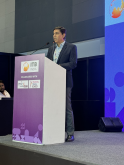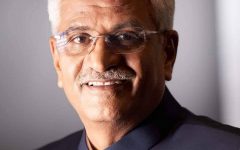 At the second edition of ITB India, Vishal Suri, Managing Director, SOTC Travel, delivered an insightful keynote on India’s rapidly evolving travel landscape. With India’s economy and demographic shifts setting the stage for unprecedented growth, Suri painted a vivid picture of how the country’s travel sector is poised for expansion, underpinned by strong domestic demand, a youthful population, and a growing middle class.
At the second edition of ITB India, Vishal Suri, Managing Director, SOTC Travel, delivered an insightful keynote on India’s rapidly evolving travel landscape. With India’s economy and demographic shifts setting the stage for unprecedented growth, Suri painted a vivid picture of how the country’s travel sector is poised for expansion, underpinned by strong domestic demand, a youthful population, and a growing middle class.
Suri began by highlighting India’s economic ascent, positioning it as a global powerhouse. Currently, the country boasts a $3.95 trillion economy and is expected to become the third-largest economy by 2027 -28, growing at a steady rate of 8%. This robust growth is fueled by a diverse economic base, including IT, services, agriculture, and manufacturing. According to Suri, this economic diversity and stability create a fertile ground for travel and tourism to flourish.
A major driver of this boom is India’s young, tech-savvy population. With 52% of India’s 1.4 billion people under the age of 50, and 27% under 30, Suri emphasised how this “Gen Alpha” is already contributing to the nation’s growing consumer market. These young consumers, being digital natives, are increasingly embracing technology to plan and book travel, shifting from a traditional “saver” mentality to a more “spending” and experience-driven mindset.
Suri also touched on the significant shift in consumer behavior, especially post-pandemic. “Pre-pandemic, travel was more about escaping life; post-pandemic, it is about experiencing life,” he noted. This psychological shift has led to a surge in local, experiential travel, with people looking for more meaningful, culturally immersive experiences rather than merely ticking off destinations. The demand for authentic stays, such as Airbnbs and homestays, has increased, reflecting a deeper desire to connect with local cultures and cuisines.
Looking ahead, Suri forecasts a major boom in domestic and international travel.
Between 2019 and 2030, Indian travel expenditure is projected to grow by 173%, reaching $410 billion. India is set to become the fourth-largest global spender on tourism, with domestic travel making up two-thirds of this growth. The number of trips Indians will take domestically is expected to soar, while international trips will also rise, with Indians traveling abroad more frequently for both leisure and business.
Suri also touched on India’s ambitions to become a major transit hub, with the expansion of airports and airlines. By 2025, India will have 220 airports, a sharp increase from 74 in 2014. Indian carriers like Indigo and Air India are expanding their fleets, with plans to double their number of aircraft, aiming to connect India more efficiently to global destinations. These developments, combined with regional airlines serving smaller cities, will significantly enhance connectivity and bolster both domestic and inbound tourism.
In conclusion, Suri’s keynote highlighted how India’s demographic, economic, and technological shifts are setting the stage for a travel revolution. With a growing middle class, increasing disposable income, and a shift in consumer attitudes, the Indian travel market is poised for exponential growth, driven by both domestic and international demand. The next decade promises to be transformative for India’s travel industry, offering immense opportunities for growth and innovation.
 Tourism Breaking News
Tourism Breaking News


